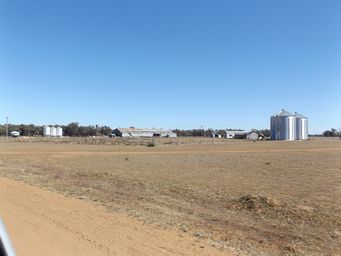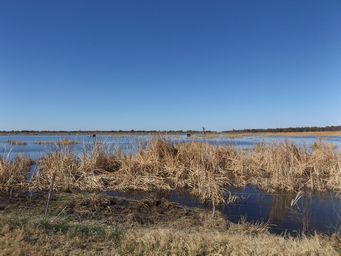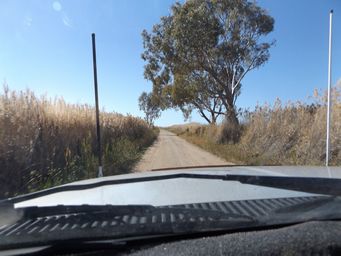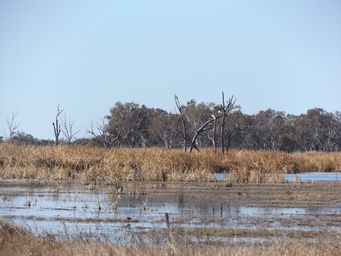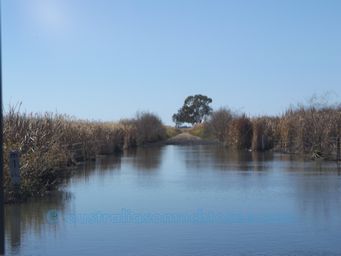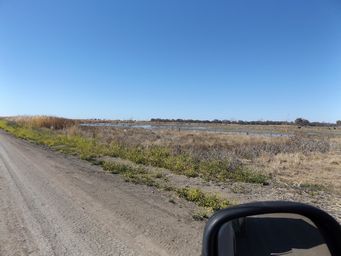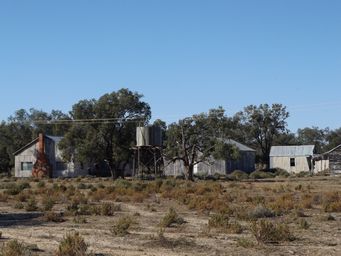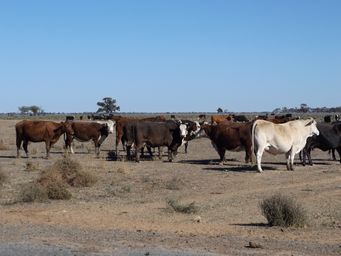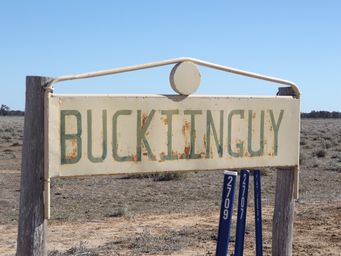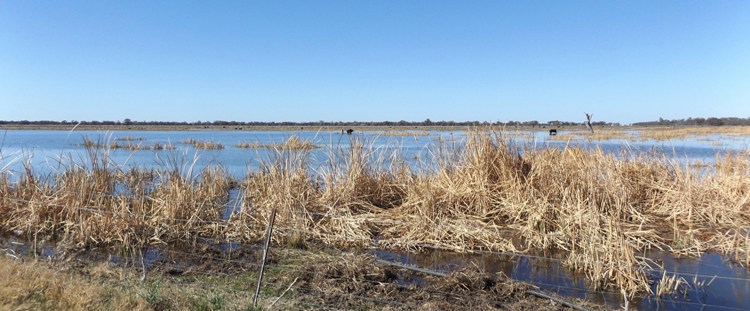Australia So Much to See
New South Wales - the surprising Macquarie Marshes
Resources
National Parks NSW – Macquarie Marshes Nature Reserve
Significant
wetlands – Macquarie Marshes
Visit Coonamble – Macquarie Marshes
The closest accommodation for the Macquarie Marshes is at Willie Retreat, a sheep station on the western edge of the nature reserve
south section, and is accessed from Gibson Way. They have a variety of rustic accommodation from cottages to bunkhouses, and
a camping and caravan park. While guests can do self guided walks around the station, including to the site of the Cobb and
Co Inn where remnants of the stables remain, they also conduct tours, to the marshlands on their station, or as a longer drive around
the northern section of the nature reserve.
Then we met water flowing across the road quite fast for an estimated 35 metres, with a maximum depth of around 700 millimetres (at
right). This was the main stream of the Macquarie River.
Tall reeds lined the road in this wet area (below). These reeds are Phragmites australis, Common reed, favours wetlands and grows to three metres tall. There were more wetlands
and reeds at Monkeygar Creek, a Macquarie River anabranch, but the road was dry.
On showing interest in the Macquarie Marshes when planning our tour of the area, we were disappointed to hear that they were dry, as was much of the drought stricken inland New South Wales. Also there is no public access to the nature reserves which comprise around ten percent of the marshes, while the rest is private property.
So when we planned a route through the area, it was not to see anything of the wetlands, but to take the most direct route from Buckiinguy to Coonamble, our next destination. This dry weather only grey clay road, the Gibson Way, crosses the marshes between two separate north and south parts of the reserve. This road is subject to flooding from the many watercourses that it crosses.
Leaving Canonba we took the road heading north west, which principally followed Duck Creek to the Buckiinguy Road junction. Duck Creek continues north to join the Bogan River 40 to 50 kilometres north of Nyngan.
To north of Canonba, we passed
Buckiinguy Station, once owned by Cobb and Co and managed by company principal Frank Whitney.
Frank Whitney has been running
a coach service in conjunction with a few associates. Then together with James Rutherford and with eight others, purchased the
legendary Cobb and Co transport business in Melbourne in the latter part of 1861 for a reputed 23,000 pounds.
When Cobb and Co
expanded into New South Wales in 1862, Frank Whitney was one of five of the business partners to migrate north also, setting up and
managing the firm’s first routes out of Orange.
Late in 1864, Cobb and Co purchased their first massive property; the 185,000
acre (around 75,000 hectares) “Buckiinguy” in the Macquarie Marshes on the frontiers of the settlement. It marked the beginning of
a property empire that would outlast Cobb and Co’s coaching interests. Over the decades the company would expand from breeding horses
for their coaching teams to raising cattle and sheep as an added income.
The Whitney family lived on Buckiinguy for some years
before moving to Orange, then to Carcoar.
Buckiinguy once incorporated ten other stations. On Whitney’s death the
Cobb and Co properties were split up.
A few sheep were grazing here. Such a contrast to cattle wading in water and green grass we saw when we entered the wetlands.
The Macquarie Marshes Bird Viewing Platform is located on the Gibson Way towards the eastern side of the marshes on Terrigal Creek. We did not stop as there was inadequate parking for our long rig. The creeks on the east side appeared quite dry.
This soon increased until both sides of the roads had paddocks virtually covered in water (below). This really was a surprise to us, and such a contrast the they dry paddocks prior (see cattle at Buckiinguy further up this page).
These marshes are however of great significance. The Macquarie Marshes are one of the largest remaining inland semi-permanent wetlands in south-eastern Australia and are of international importance covering 220,000 hectares, with much of this floodplain area farmed as pastoral stations. The marshes are approximately 100 kilometres long from north to south, and 30 kilometres wide.
The nature reserve of 23,141 hectares samples all the habitat types present in the Marshes, is a major waterbird breeding area, and an important refuge for a large number of other wildlife species. The Macquarie Marshes regularly support more than 20,000 waterbirds, and more than 500,000 birds when there are large floods. The Marshes are Ramsar listed.
The nature reserve does not cater for day-visitors or campers. Access is restricted to management and research personnel. However, when conditions are suitable, the National Parks and Wildlife service runs guided activities around the reserve, usually over the October long weekend.
The
marshes were first sighted by Europeans when, following the course of the Macquarie River in 1818, John Oxley and his party found
that the river disappeared into an 'ocean of reeds'. It was speculated that this was the edge of the legendary inland sea of Australia,
but when Charles Sturt arrived in 1828 and explored the river, he found the marshes nearly dry, such is the frailty of the Australian
climate.
The Macquarie River starts near Oberon and heads north through Bathurst, Wellington, Dubbo and Warren,
with a number of weirs along its path, the largest being Lake Burrendong near Wellington. North of Warren, the floodplain widens,
with numerous anabranches and creeks forming the wetlands which are in places around thirty kilometres wide. North of Carinda,
most anabranches and creek re-unite with the Macquarie River, which is then joined by the Castlereagh River. The Macquarie joins
the Barwon River half way between Walgett and Brewarrina. The Barwon River becomes the Darling River after the confluence with
the Culgoa River, between Brewarrina and Bourke. These rivers systems including the Macquarie Marshes are suffering from over
extraction, mostly for irrigated crops such as cotton.
Nothing remains of the homestead from the Cobb and Co days. A few old and appearing unused buildings of a more recent era opposite
the Buckiinguy entrance may have been staff quarters (above). The present station homestead at Buckiinguy is a kilometre from
the road.
This river weaves a long path from its source on the eastern side of the Warrumbungle Range where it first goes east to Coonabarabran. The river then loops and meanders around to Gilgandra from where it takes a northerly route through Gulargambone and Coonamble, from
where the Castlereagh Highway follows the general direction, without the meandering of the nearby river. The Castlereagh River
eventually finds its way westward to join the Macquarie River.
